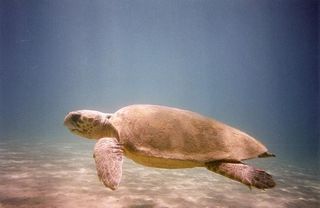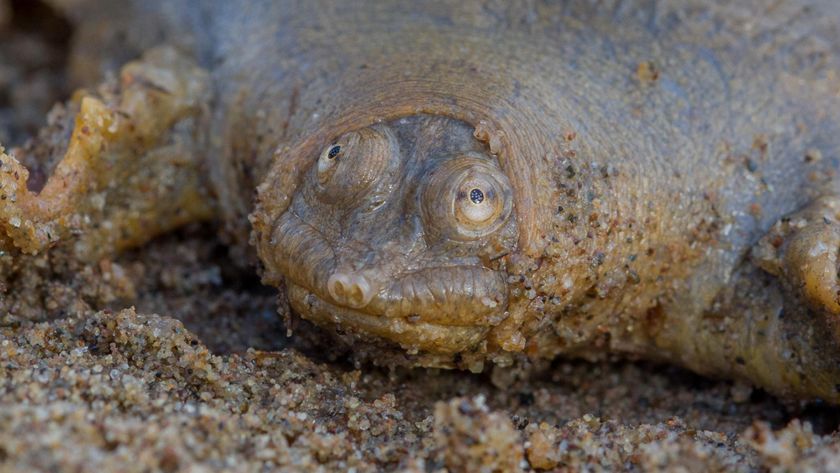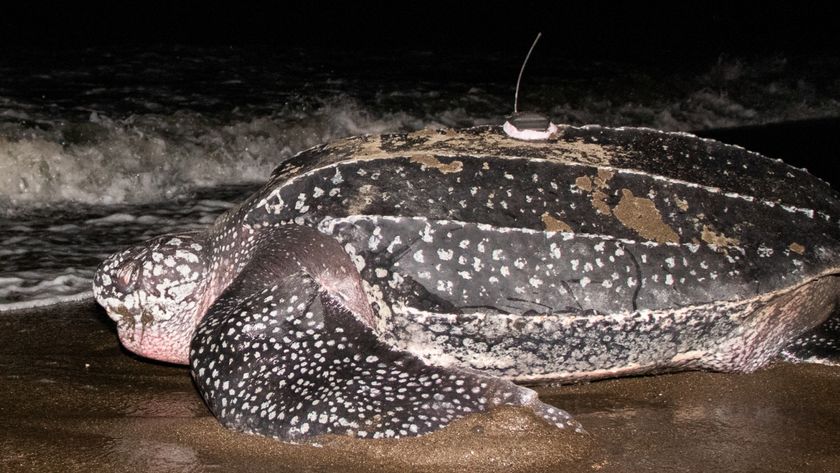
American Turtles' Surprising Habits Revealed

The planet's second-largest population of loggerhead turtles a species that is endangered in many spots around the world frequents U.S. beaches, from North Carolina to the Gulf Coast of Florida. And now a decadelong tracking study has revealed surprising new information on the turtles' travels.
In recent years, large-scale satellite tracking studies of marine animals have revealed that many seafaring creatures, including other species of sea turtles, travel to unexpected locales at unexpected times.
But it turns out loggerhead turtles are the dependable type the sort of turtle you'd want to bring home to Mom and Dad. Wild thrill-seekers they are not, sticking to their usual migration path time and time again.
Most of the turtles in the study rarely strayed from the United States continental shelf, and traveled from nesting grounds along the southeastern seaboard as far north as New Jersey to forage in the summer, and as far south as Florida and the Bahamas in the winter, and returned to the same areas within each region during each season.
"North American loggerhead sea turtles are really predictable they don't do the kooky stuff. They don't go wandering off very often," said Lucy Hawkes, an ecologist at Bangor University in England.
So in an ironic twist, Hawkes said, it was precisely the lack of surprising turtle behavior that was one of the biggest surprises to come out of the research, which is helping to inform conservation of U.S. loggerheads.

Turtle tag
Sign up for the Live Science daily newsletter now
Get the world’s most fascinating discoveries delivered straight to your inbox.
Between 1998 and 2008, researchers tracked the movements of 68 adult female loggerhead turtles, sometimes for more than two years straight. (After they hatch and scamper into the sea, male loggerheads never return to land, making them more difficult to study.)
As the turtles buried their eggs in the sand on North Carolina beaches, researchers epoxied satellite tags to their shells. "It's not difficult, but it takes a bit of time," Hawkes told OurAmazingPlanet. [Related Images: Tagging and Tracking Sea Turtles ]
In a schedule that mirrors that of human snowbirds, most of the animals head south for winter and north in the summertime.
"And they're quite good at predicting when to arrive," Hawkes said. "They seem to arrive just as soon as the water is warm enough and leave a week before it gets too cold."
Because they're cold-blooded animals, the turtles can get into trouble if they end up in chilly waters cool temperatures slow down their metabolism, making the turtles sluggish and easier targets for hungry predators.
However, fine-tuned as the turtles are to water temperature, Hawkes said it's still not clear how the loggerheads come by their inside information.
Linking the turtles' movements to temperature allows researchers to pinpoint where the animals are with astounding accuracy, and Hawkes said the findings have already proved useful.
Forecasting turtle moves
A U.S. Army Corps of Engineers project was scheduled to begin dredging in the Delaware River, but the new data revealed the area would be full of loggerheads at the time. Managers shifted the start date to avoid affecting the turtles, Hawkes said, "so we're really lucky we've been able to produce some real conservation action on the ground."
Hawkes pointed to the change as an example of the comparative advantage of the population's loyalty to U.S. waters. Since satellite data revealed the turtles rarely leave U.S. jurisdiction, only one country must deal with conservation issues.
Such is not the case for loggerheads that live along the west coast of Africa, where the home range can include coastlines of eight or more countries.
And it's in this region of the world that the turtles are facing many threats . Loggerheads, huge turtles that weigh in at more than 250 pounds (113 kilograms), with shells that span more than 3 feet (1 meter) from front to back, are killed for meat; their eggs are taken and sold; in addition, the turtles are killed for their blood. Some local traditional medicine recommends a bath in loggerhead blood as a cure for leprosy, Hawkes said.
The U.S. population of loggerhead turtles appears to be doing fairly well. Estimates range from 30,000 to 50,000 adults. Add in juveniles, and the number could be closer to 100,000.
"That sounds like a huge number, and it is," Hawkes said. "But it's the world's second-largest population," she said, so it's a large proportion of all the loggerhead turtles on Earth, making their protection all the more important.
Reach Andrea Mustain at amustain@techmedianetwork.com. Follow her on Twitter @AndreaMustain.












